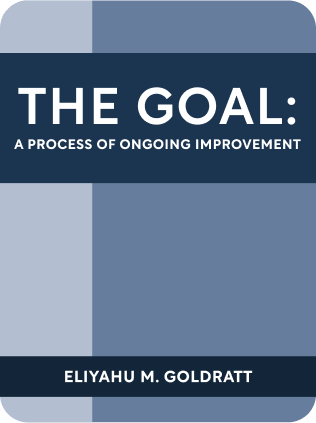

This article is an excerpt from the Shortform book guide to "The Goal: A Process of Ongoing Improvement" by Eliyahu M. Goldratt. Shortform has the world's best summaries and analyses of books you should be reading.
Like this article? Sign up for a free trial here .
Do you need discussion questions for The Goal? What are the book’s key lessons and how can you apply them?
The Goal discussion questions address the key topics of the book. By working through these nine exercises, you can start applying the strategies in the book to improve your output.
Keep reading for nine The Goal discussion questions.
The Goal Discussion Questions: Overview
Want to increase your personal output, or the output of your team? Do you feel like there’s a bottleneck constraining you, but you don’t know how to improve it? Have you tried working harder, with little results?
The Goal explains why optimizing activities that seem productive can actually be pointless. This classic management book (recommended by Jeff Bezos as required reading for new Amazon managers) introduced the idea of identifying the bottleneck in a production system and restructuring the organization around it. It upends traditional obsessions with cost efficiency to focus on what really matters.
The messages of this book are all touched on by the discussion questions for the goal below. The topics include defining your goal and identifying and improving your bottlenecks.
Define Your Goal
Make sure you’re focusing on the right output and not just wasting time.
- What is your big Goal? What is the ultimate purpose of your work?
- What is the minimum number of measurements to know if you’re hitting your Goal?
- What activities do you do each day that drive you toward your Goal? List the most important ones.
Identify Your Bottleneck
Find the bottleneck that’s decreasing your total throughput.
- In what step do you have the greatest inventory piling up in front? Where is your largest backlog?
- What you defined above is your bottleneck, and every other step is not a bottleneck. What are other steps you thought were important to optimize, but actually aren’t bottlenecks?
- What is the cost of your bottleneck per hour? Remember, this is the loss in throughput of the entire system per hour.
Improve Your Bottleneck
Try to increase capacity at your bottleneck. This might not be a machine in an assembly line, but also your knowledge, work or personal life.
- How could you improve work at the bottleneck itself? (Remember: skip unnecessary steps; add supplements to increase capacity; increase time the bottleneck is active.)
- How could you improve what the bottleneck works on? (Remember: focus the bottleneck only on critical parts needed today; allow parts to skip the bottleneck; add analytics to study bottleneck operations.)
- How could you optimize the system for the bottleneck? (Remember: ensure excess inventory in front of the bottleneck to prevent idling; redistribute load to non-bottlenecks; outsource the bottleneck work.)

———End of Preview———
Like what you just read? Read the rest of the world's best book summary and analysis of Eliyahu M. Goldratt's "The Goal: A Process of Ongoing Improvement" at Shortform .
Here's what you'll find in our full The Goal: A Process of Ongoing Improvement summary :
- How to increase your personal output
- How to increase your team's output
- Why obsessing over cost efficiency isn't going to help you with production






